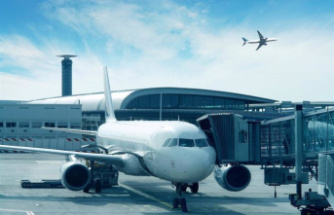Caption
Close
Albany
The Albany City School District is warning of a potential $1.8 million budget deficit next year that could require a tax increase if the state Legislature is unable to secure more school funding in the state budget, due this March.
And that's if district programs and services remain in their current form, without the additional teachers and staff officials say are needed to serve a growing population of nearly 10,000 students.
The good news? Lawmakers almost always secure more school funding as the budget season progresses.
"The governor generally draws one line, and the Assembly traditionally comes back with significantly more," said Assemblyman John McDonald III, who visited the city school board Thursday night along with Assembly colleague and former Albany school board president Patricia Fahy.
Under Gov. Andrew Cuomo's budget proposal, the Albany City School District would receive an extra $2.5 million next school year, up 2.5 percent from a total $99.7 million allocation in 2016-17. State aid makes up roughly 42 percent of the district's annual budget, which totaled $234 million this year.
School boards begin planning annual budgets early in the year, and update figures as state negotiations progress. The Albany school board hopes to adopt a final budget April 6, and no later than April 12. Residents will vote on the budget May 16.
A new strain the district faces this year is a proposal by Cuomo to increase tuition payments to charter schools by about 7 percent. The Albany school district currently pays $14,572 in tuition for each student in the district who attends a charter school. A tuition increase, along with an ongoing expansion at KIPP charter elementary school, will end up costing the district an extra $3.5 million in charter school expenses next year for a total $36.2 million, officials said. The governor has proposed just under $2 million for the district to offset increased charter school costs.
Assuming the district maintains services next year, overall expenses would increase 2.1 percent to $239 million and revenues would increase 1.3 percent to $237 million, leaving a $1.8 million gap. The board could decide to raise the tax levy, the amount it collects from property owners each year, by 1.6 percent to make up the difference.
"We never really know what it will all look like until March 31, when the Legislature finalizes the budget, so we're hopeful more funding will come," said Bill Hogan, assistant superintendent for business affairs.
District officials, of course, would prefer to expand programs and staff. Enrollment has grown 26 percent over the past eight years, thanks to charter school closures and an uptick in immigrants and refugees arriving in the region. This has put a strain on classrooms and staff, and prompted the district to rethink the way it serves students who are struggling to learn English in addition to core subjects like math, science and social studies.
The district is hoping to expand a voluntary and fledgling newcomer program that would serve these students in a separate environment for two years, allowing them to receive intensive literacy instruction and other services, before returning to their home schools prepared for regular instruction.
It would cost $420,000 to start phasing the program in next year, starting with newly arrived immigrant and refugee students in grades 6-12, four new full-time employees and 12 full-time employees who would be transferred from elsewhere in the district.
A top priority for next year, as well, is the opening of a new middle school at 50 North Lark St. The building will open following years of overcrowding and growth at the middle school level, and will serve roughly 340 students this fall, eventually growing to 600 students by the 2019-20 school year.
It would cost an extra $1 million to staff the new middle school, with the bulk of the staff being transferred from the soon-to-shutter West Hill Middle School and other schools.
For a more detailed look at the district's 2017-18 budget process and priorities, see the documents below, which were presented to the board of education Thursday.
BOE Budget Update 02162017 by Bethany on Scribd
Academic Plan Budget 2-13-17(3)(1) by Bethany on Scribd
Academic Plan Budget 2-13-17(3) by Bethany on Scribd
EnhancedAcademicPlan 2-13-17(1) by Bethany on Scribd
Our editors found this article on this site using Google and regenerated it for our readers.













